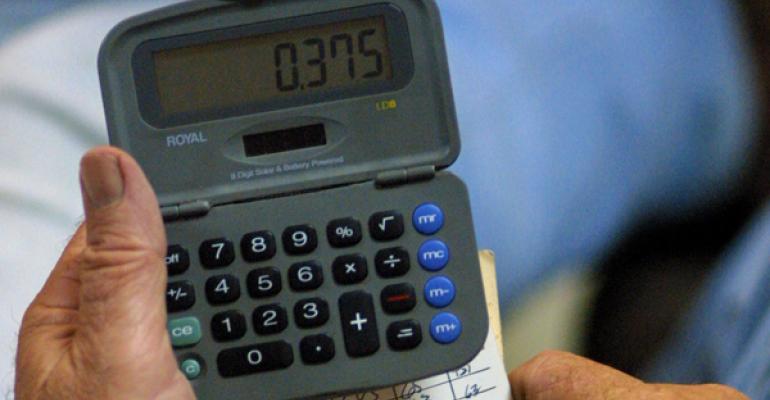I am a restaurant guy. I’ve owned quite a few in my time and while I always valued what my accountants told me, I knew the “holy grail” was cash flow. Without cash on hand to pay vendors, meet payroll and cover the rent and utility bills, a restaurant doesn’t open the next day. And forget about profitability at the end of the year. Unfortunately many of the cash flow pains suffered by restaurateurs and other small business owners are often the result of rigid cash management practices. With some simple tricks, the ups and downs of income versus expenses can be smoothed out. Try this strategy:
1. Don’t pay everything at once. We regularly see clients sit down, line up their monthly bills and write all the checks at once. They hope that they put aside enough cash or that their upcoming sales will float their payments through. These costs eat up cash flow and bounced checks can ruin relationships with those who are currently offering you credit. While it is okay to write out the checks all at one time, you need to put the checks into a “holding pattern.” Mark each envelope with the date you should mail it to land on time and without crashing into another check. Stagger the payment dates by the importance and disburse checks accordingly.
For instance, the highest priority accounts are those for which a missed payment can hurt you either in cost or ability to operate your business. This includes rent, taxes or late utility bills. Other bills, such as utilities and insurance payments, will often have a reasonable grace period or a financial penalty modest enough to take advantage of having this cash on hand when needed. But these are still important bills to pay because you don’t want to get cut off. There‘s nothing more destabilizing than having your electric shut off in the middle of your Saturday dinner rush! Finally, be sure to look out for flexibility in payment options. Vendors and wholesalers who supply most restaurants are the best sources of flexible financing. Many are happy to work with you as long as there are regular payments scheduled, even if they are small.
2. Make it real! Pay on revenue you have, not on the sales you are hoping to make. Would you land a plane hoping that the runway is beneath you in that fog bank? No, you want to know it is there, so only make payments knowing your sales are in the bank. If you know what you have, you will know what you can pay.
3. Invest in a payroll service. The two biggest drains on cash flow are payroll and sales taxes. It may seem like an unnecessary cost for very small businesses, but a good payroll service can be invaluable, particularly in the collection and payment of payroll taxes. Rather than worry about saving the money and making progress payments to federal and state agencies, let the pros do it.
4. Get creative with your payroll schedule. As a restaurant, your business model is structured around taking in daily revenue, with most of your sales generated on the weekend, but you still need to meet payrolls. Solid cash flow planning is required to make sure that the outflow is covered by the cash on hand and incoming sales. Some states permit biweekly or bimonthly payroll, which can be helpful to those businesses, especially when paid on the week before or after rent or other obligations are due. This also cuts down on the frequency of payroll tax deposits, as payroll periods are spread out.
5. Establish relationships with a reputable credit provider. Planning for a rainy day is a noble cause but unrealistic for many restaurant owners. One thing I learned as a restaurant owner—and now as someone who finances them and other small businesses—is that most cash flow storms come suddenly and cause a sense of desperation or lack of control. It happens to most businesses at one time or another. If you work with a quality company that provides working capital, stick with them and build a relationship. If they know you, they will be there to help quickly when you call.
6. Strengthen your relationship with your banker. Your banker may not give you a loan and may not provide you with a line of credit, but banks do have a great deal to say if checks bounce or are charged NSF fees and cleared. Communicate with your banker and let them know where you stand and what is happening with your business. They often listen and can help.
Managing cash flow has long been, and will long be, a major headache for many restaurant owners, but it’s possible to bring relief through smart planning and open lines of communication with vendors and financial partners.
David Sederholt is c.o.o. of Strategic Funding Source, Inc., a provider of financing to a wide range of businesses, including restaurants, retailers, hotels and more.





